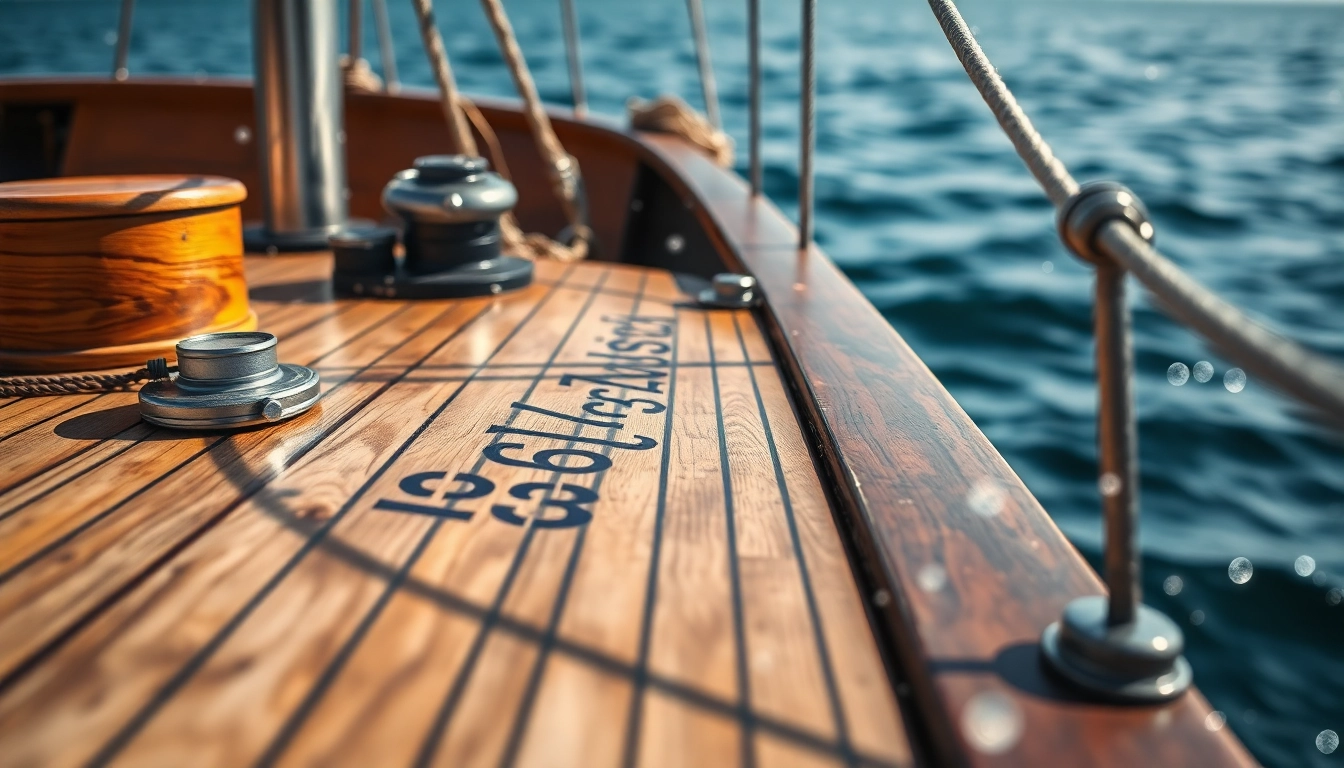Fundamentals of Boat Sailing: Techniques and Significance
Understanding the intricacies of Boots Versegelung is essential for safe and efficient maritime navigation. The term encompasses the methods and tools used to determine a boat’s position, course, and heading on the water. Historically, sailors relied on natural phenomena and visual cues, but advancements in navigation technology and techniques have significantly enhanced precision and safety. In this article, we delve into the core aspects of boat sailing, emphasizing methods, tools, challenges, and best practices to ensure confident and secure navigation on the open sea.
Historical Development of Navigation Techniques at Sea
Navigation has evolved remarkably from ancient days when sailors used celestial navigation, dead reckoning, and visual landmarks to modern electronic systems. The earliest navigators depended heavily on the position of the sun, stars, and natural markers. Over centuries, innovations such as the magnetic compass and more accurate charts revolutionized maritime travel. The advent of gyrocompasses, radar, GPS, and electronic chart systems further transformed navigation into a precise science. Despite technological progress, traditional techniques like versegelung remain valuable, especially in situations where electronic aids fail or are unavailable, underscoring the importance of mastering fundamental navigation skills.
Comparison with Modern Electronics and Classical Methods
While modern electronics such as GPS, AIS, and electronic chartplotters offer unparalleled precision and real-time data, traditional methods provide essential backup and a deeper understanding of the navigational environment. Classical techniques, including sextant measurements, celestial navigation, and manual plotting, foster a comprehensive grasp of maritime positioning. Combining both approaches—integrating versegelung with digital tools—ensures redundancy and enhances safety. For example, a sailor might use landmarks and celestial observations to verify GPS data, reducing the risk of navigational errors caused by signal loss or technical malfunctions.
Step-by-Step Guide to Conducting a Boat Sailing (Versegelung)
Preparation: Setting Up Charts and Instruments Correctly
Effective navigation begins with meticulous preparation. Use up-to-date nautical charts that accurately depict the waterway, hazards, and landmarks. Ensure all instruments—compasses, protractors, and sighting devices—are calibrated and functioning properly. A well-organized cockpit with clearly marked tools and easy access to devices minimizes errors during critical phases of navigation.
Determining Directions and Angles: Calculating Bearings and Courses
The core of versegelung involves measuring bearings to known objects and plotting these on charts to establish your position. This process includes taking visual bearings with a compass or binoculars, noting angles to fixed points, and calculating your course relative to the water or land features. Proper use of nautical instruments like the azimuth circle enhances accuracy. Consistent and precise measurements are critical to avoid cumulative errors.
Minimizing Errors and Improving Accuracy
Navigation inaccuracies stem from environmental factors, instrument misalignment, or human error. To mitigate this, regularly check compass calibration and use multiple reference points to cross-verify position estimates. Be mindful of magnetic deviations caused by nearby metal structures or electronics. Employing techniques like double-peeling—taking bearings on multiple points and comparing—enhances reliability. Practicing these routines systematically ensures higher precision and confidence in the navigation process.
Common Challenges in Boat Sailing and Their Solutions
Water Conditions and Visibility Issues
Challenging water conditions, such as rough seas, waves, or fog, can impair visual navigation. Utilizing radar, AIS, or echo-sounding devices provides supplementary data, and maintaining a vigilant lookout is crucial. In low visibility, reliance on electronic aids increases, but traditional bearings should still be recorded as backup.
Avoiding Typical Navigation Errors
Errors such as misreading bearings, incorrect compass readings, or chart inaccuracies can compromise safety. Regular instrument calibration, consistent plotting, and cross-referencing multiple data sources help prevent these mistakes. Training and experience further enhance situational awareness and decision-making skills.
Situational Adaptations and Practical Tips
Adaptability is vital. Adjust navigation strategies based on environmental changes, such as shifting currents or unexpected obstacles. In dynamic conditions, increase the frequency of bearing measurements and maintain clear communication with crew members. Using well-maintained, modern tools alongside traditional methods offers a balanced, resilient approach to navigation.
Essential Tools and Equipment for Effective Boat Sailing
Utilization of Peil Instruments and Nautical Charts
Peil instruments, including hand-held compasses, fixed bearing compasses, and modern electronic devices, are fundamental for accurate direction measurement. Nautical charts provide the visual framework for plotting positions, water depths, and hazards. Mastery of chart reading and plotting techniques is key to precise navigation.
Technological Support: GPS and Electronic Navigation Systems
Global Positioning Systems revolutionized maritime navigation, offering real-time position tracking. Modern boats often integrate GPS with electronic chartplotters, enhancing situational awareness. However, it is critical to understand and verify these systems’ outputs with traditional methods to minimize risks related to signal loss or device malfunction.
Maintenance and Calibration of Navigation Tools
Regular maintenance, such as recalibrating compasses, updating electronic charts, and checking instrument accuracy, ensures reliable data. Keeping backup tools ready and understanding their proper use provides redundancy and confidence during voyages.
Best Practices for Safe and Precise Navigation on the Water
Route Planning and Monitoring Using Versegelung
Pre-planning routes with detailed charts, including marking waypoints and potential hazards, minimizes navigational surprises. During the voyage, continuous monitoring of deviations from the planned course enables timely corrections, reducing the likelihood of straying off track.
Integrating Multiple Navigation Methods
Combining traditional and modern techniques—visual bearings, celestial observations, electronic positioning—creates a comprehensive navigational strategy. Cross-verifying data ensures higher accuracy and alerts navigators to discrepancies early.
Emergency Procedures and Contingency Planning
In case of electronic failure or environmental challenges, revert to basic navigation methods. Having a contingency plan—such as known landmarks, manual plotting skills, and emergency communication protocols—ensures safety and rescue readiness if needed.
